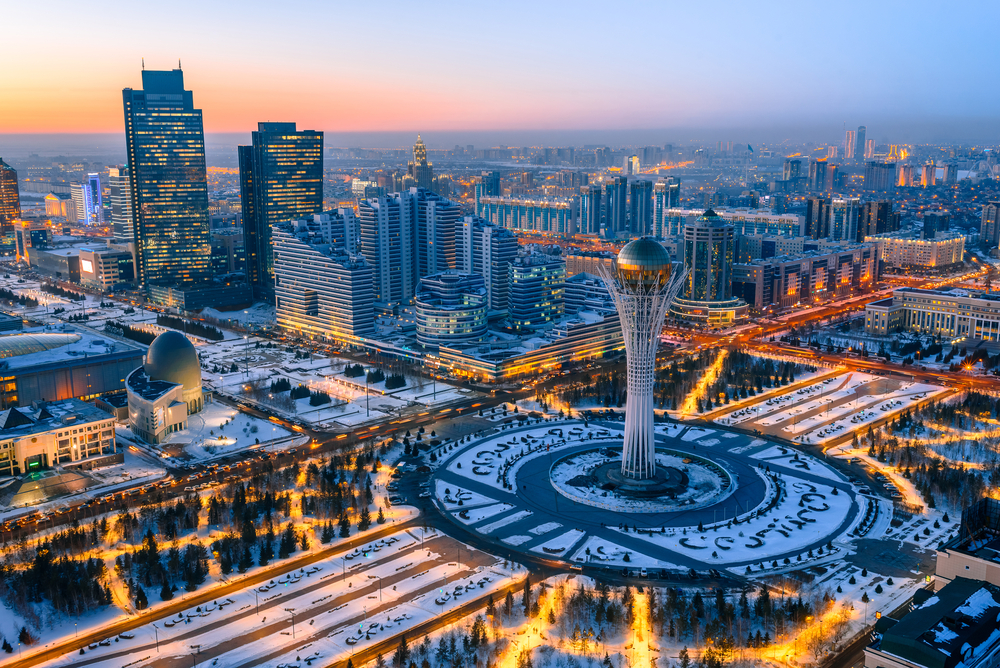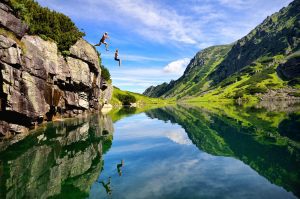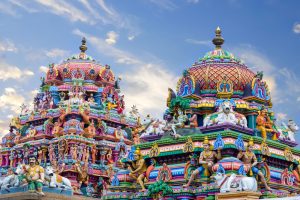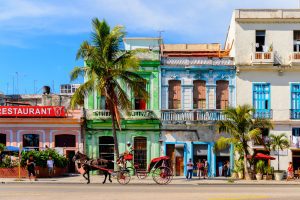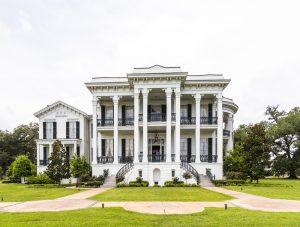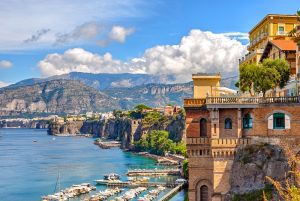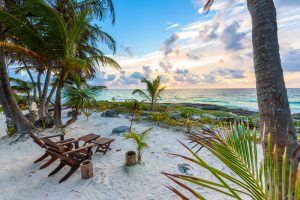Kazakhstan’s 30 biggest cities welcome visitors with open arms.
Kazakhstan may not have been on your travel radar, but as a home to beautiful scenery, ancient settlements, and impressive mosques, you’ll definitely want to add it. Want to learn more about what it’s like to travel in this beautiful country? Stay tuned ’til the end of the article to find out more about Kazakhstan’s food, culture, and sights.
Visitors from the United States (and select other countries) can enter the country visa-free for up to 30 days. To ease your travel planning, we’ve compiled a list of Kazakhstan’s 30 most populous cities so that you can map out your next big adventure.
Table of Contents
The Biggest Cities in Kazakhstan
| Number | City | Population |
|---|---|---|
| 1 | Almaty | 1,854,656 |
| 2 | Nur-Sultan | 1,127,263 |
| 3 | Shymkent | 1,038,278 |
| 4 | Aktobe | 497,381 |
| 5 | Karaganda | 496,701 |
| 6 | Taraz | 357,791 |
| 7 | Semey | 349,102 |
| 8 | Pavlodar | 334,057 |
| 9 | Oskemen | 329,090 |
| 10 | Atyrau | 268,840 |
| 11 | Kostanay | 239,652 |
| 12 | Kyzylorda | 238,349 |
| 13 | Oral | 234,233 |
| 14 | Petropavl | 218,031 |
| 15 | Aktau | 182,033 |
| 16 | Zhanaozen | 181,635 |
| 17 | Temirtau | 179,248 |
| 18 | Turkestan | 164,413 |
| 19 | Kokshetau | 145,652 |
| 20 | Taldykorgan | 145,431 |
| 21 | Ekibastuz | 134,152 |
| 22 | Rudny | 115,448 |
| 23 | Jezkazgan | 87,101 |
| 24 | Balkhash | 78,624 |
| 25 | Satbayev | 69,275 |
| 26 | Kentau | 68,137 |
| 27 | Zhetisay | 67,301 |
| 28 | Kaskelen | 64,825 |
| 29 | Stepnogorsk | 64,582 |
| 30 | Kulsary | 60,319 |
1. Almaty: 1,977,011
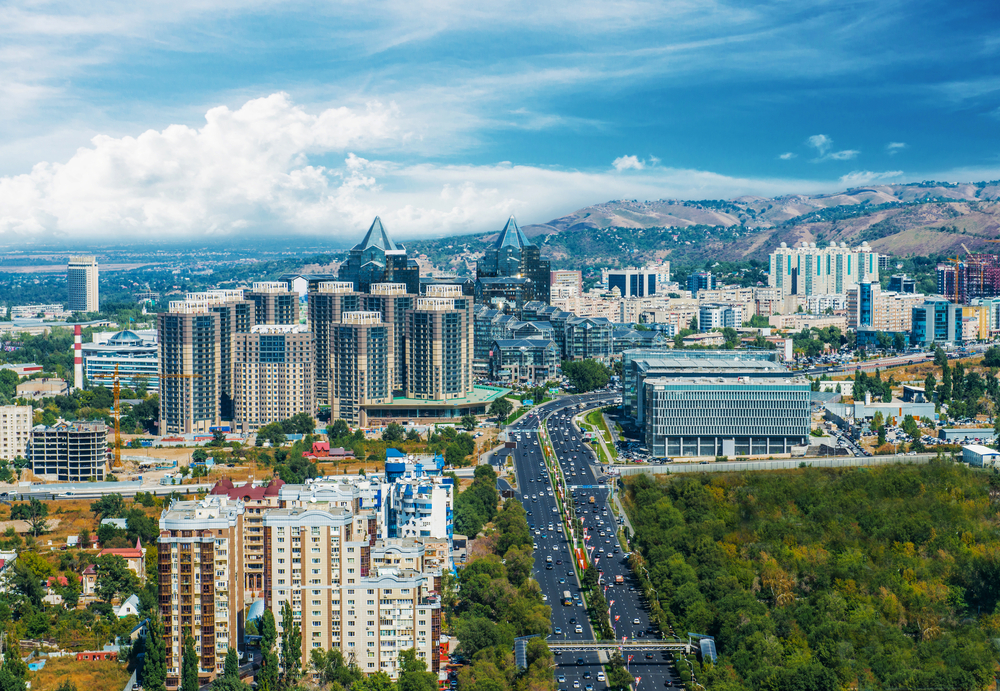
With a population of almost two million people, Almaty is Kazakhstan’s largest city and is considered the heart of the country’s classical and popular culture.
As a historical trading hub, Almaty is built on the site of an ancient settlement that was destroyed by the Mongols in the 13th century but rebuilt by Cossacks, Russians, and Tartar merchants in the 1800s.
Major landmarks, such as the Central State Museum of Kazakhstan, with thousands of Kazakh artifacts on display, offer visitors a look into the city’s rich history.
As a major metropolitan area, Almaty offers lots of things to see and do, including an opera house, theaters, a botanical garden, a zoo, and more.
There are also over 125 fountains! The city celebrates the “Day of Fountains” every year at the end of spring when all of the city’s fountains are turned on after a long winter of being dormant.
Almaty is one of the most beautiful cities in the world, with wide, tree-lined streets and parks set to a backdrop of majestic mountain peaks.
Don’t miss the Ascension Cathedral, built in 1907. It is the second tallest wooden building in the world!
2. Nur-Sultan: 1,136,000
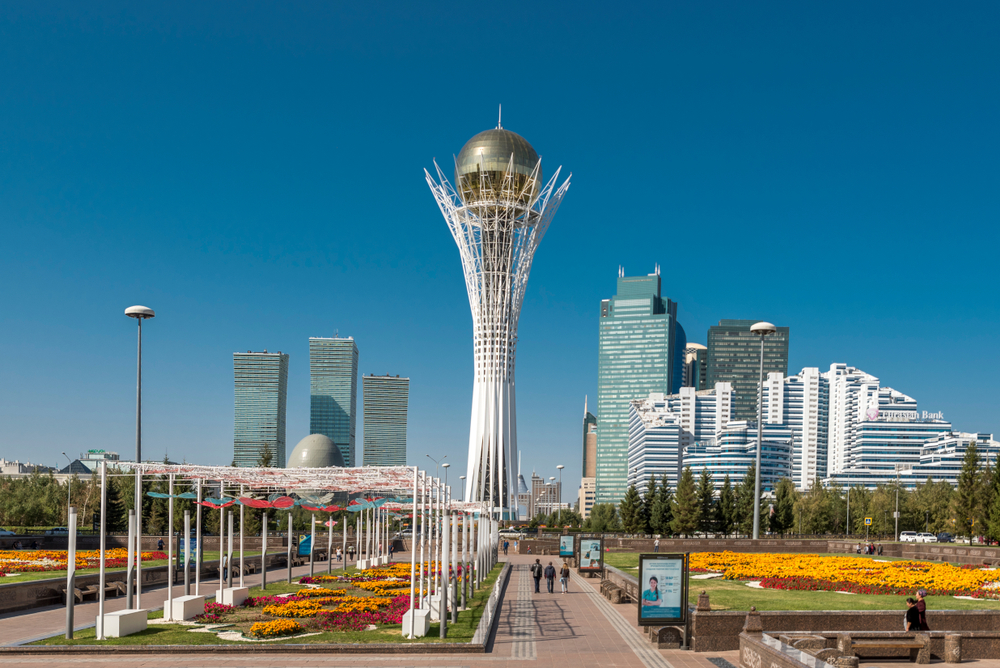
Nur-Sultan, the capital of Kazakhstan, was named after former Kazakh president, Nursultan Nazarbayev, in 2019. With over a million people, it is the second-largest city in the country.
Nur-Sultan is full of modern, space-age buildings, including Bayterek, the Palace of Peace and Reconciliation, the National Museum of the Republic of Kazakhstan, and the Khan Shatyr Entertainment Center.
There are also many historical landmarks, such as the Hazrat Sultan Mosque and the Presidential Palace.
Nur-Sultan, known for its futuristic architecture, has many concert halls, museums, cultural centers, and sports arenas.
Sports enthusiasts can choose from football, ice hockey, cycling, basketball, ice skating, martial arts, and more – there is plenty to see and do.
Although summers are mild, when visiting Nur-Sultan in the winter months, be sure to bring warm clothing. Temperatures can be extremely frigid, with averages below zero.
3. Shimkent: 1,093,000
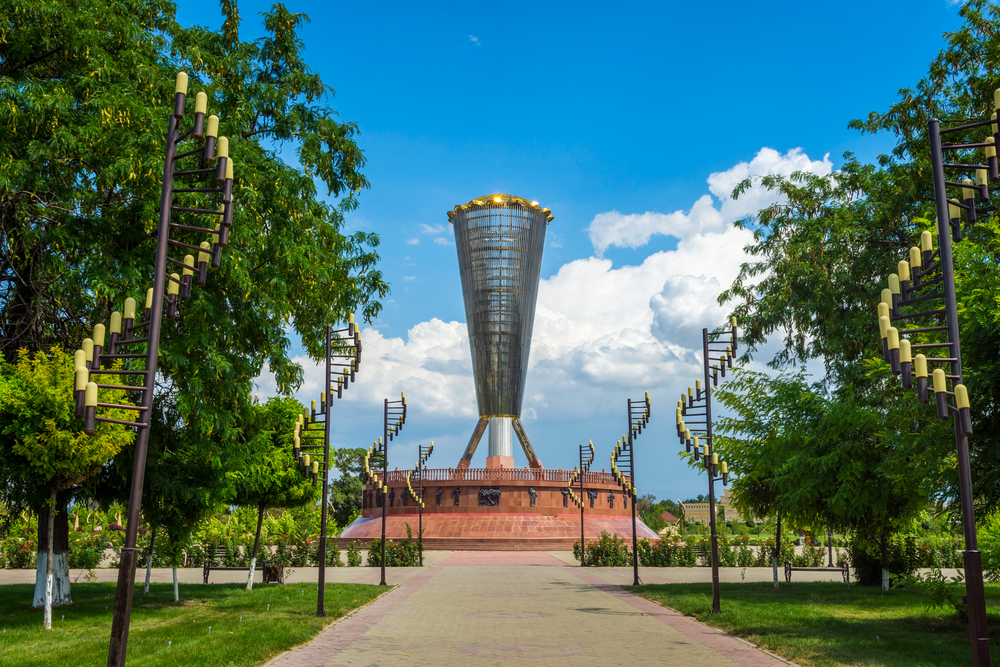
With over a million people, Shimkent (also spelled Shymkent) is the third-largest city in Kazakhstan. In 2016, Shimkent City added new districts consisting of modern residential and administrative areas. The city is definitely experiencing a growth spurt.
Visitors will find getting around the city quite easy. Express trains, buses, taxis, and a bicycle-sharing system with forty stations provide a choice of transportation options to both residents and visitors.
Parks, libraries, theaters, famous landmarks, and the old city offer lots to see and do, so there is something for everyone to enjoy.
Dendropark, on the outskirts of the city, contains over 500,000 trees and shrubs, including 1,360 varieties. Most of the trees and plants are rare and exotic, coming from different regions of the world. If you’re visiting in the spring, this park is the place to go.
4. Karaganda: 505,000
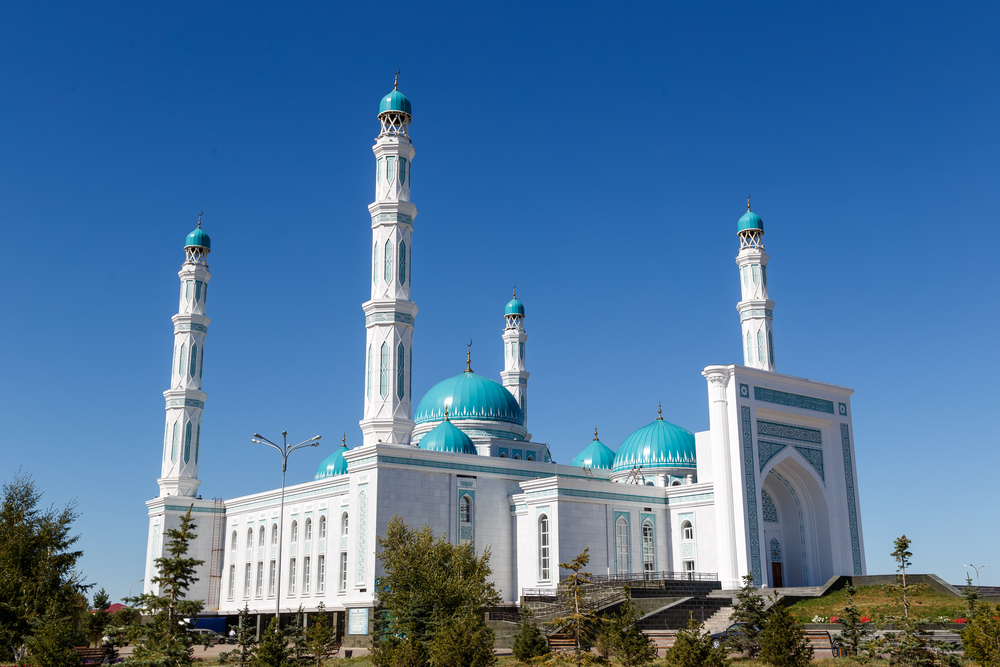
With half a million people, Karaganda is the fourth largest city in Kazakhstan. Located in a fairly isolated area, Karaganda is often referred to as “the city in the middle of nowhere”.
This city is full of history. In fact, in July of 2019, archeologists unearthed the remains of a young couple dating back 4,000 years! This Bronze Age couple was buried face to face with gold jewelry, ceramic pots, knives, and the remains of horses.
There are plenty of things to see and to do in Karaganda. The Miners Palace of Culture is a major landmark and Shakhtyor Stadium is home to FC Shakhter Karagandy football club (the current champions of the Kazakhstan Premier League).
Winter sports are very popular in Karaganda. Saryarka Karagandy, the ice hockey team, plays in the Russian-based Supreme Hockey League.
As interest grows more and more every year, multi-sports winter games are organized for the Qaraghandy Region.
5. Taraz: 367,551
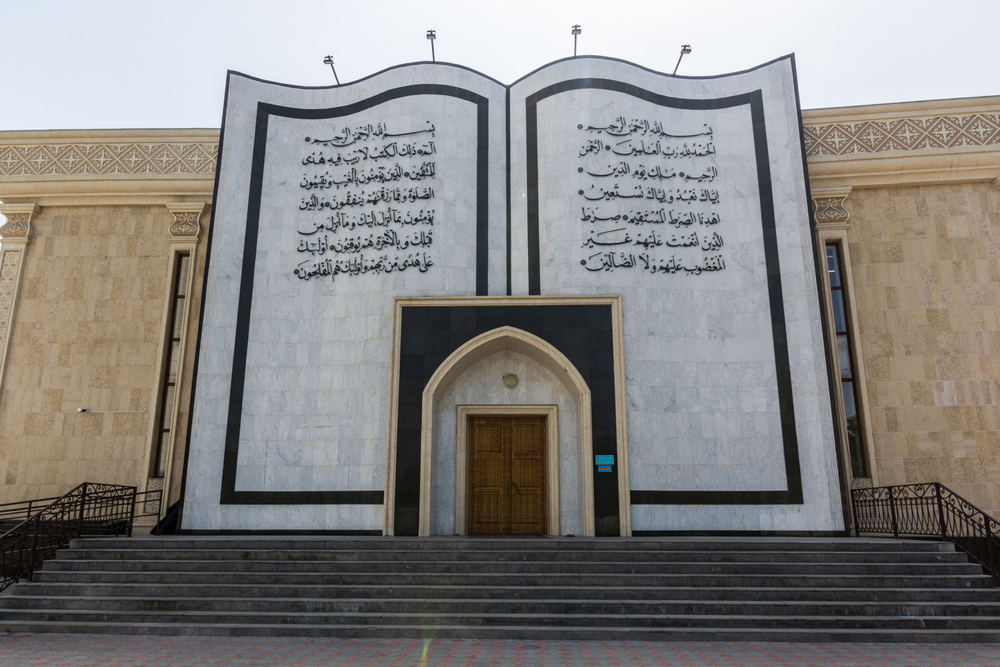
Possibly the oldest city in Kazakhstan, modern Taraz stands on the site of the ancient city of Taraz, which flourished as a stopping point on the Silk Road until it was destroyed by the Mongols in the 13th century.
Today, Taraz is one of the fastest-growing cities in the country, steadily climbing closer to half a million people.
It has recently experienced an economic revival with modern amenities, including new apartment buildings, condo-style housing, large public parks, department stores, and more.
6. Pavlodar: 335,000
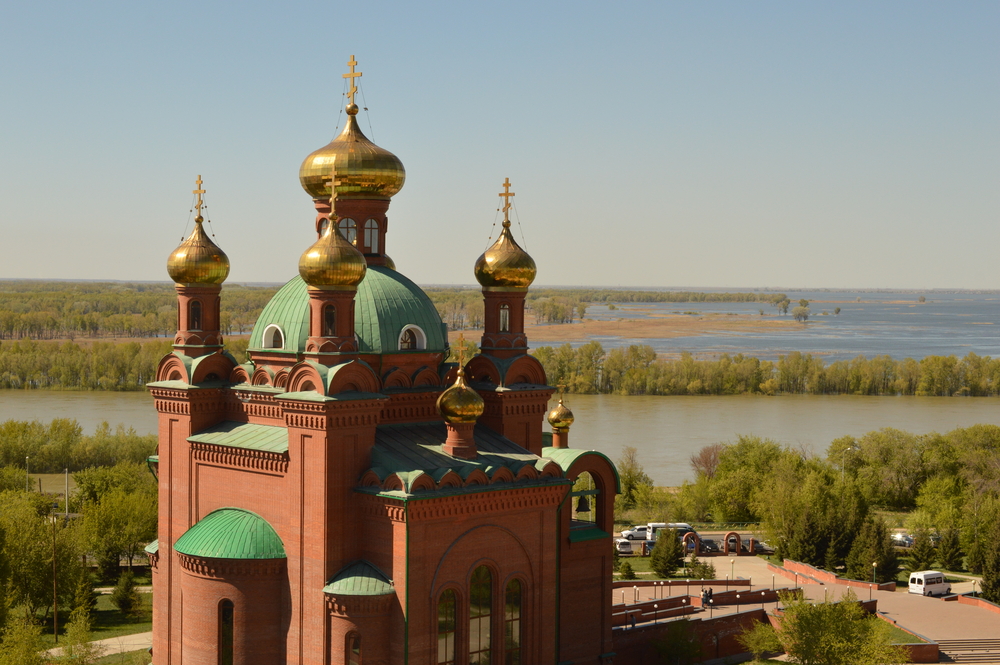
Pavlodar has a population of over 300,000, which makes it one of the largest cities in Kazakhstan. It is also one of the oldest. Founded in 1720 as a Russian outpost, the settlement overlooked the region’s salt lakes.
Pavlodar means the “Gift of Paul” and was chosen as the city’s name to commemorate the birth of Grand Duke Paul Alexandrovich.
Major growth began in 1955 when large numbers of men and women from the Soviet Union were relocated to the city. Pavlodar quickly became a leading industrial center.
Pavlodar has an extensive streetcar network, making travel within the city fairly easy for both tourists and locals.
Several universities are located in Pavlodar, including Pavlodar State University, Pavlodar State Pedagogical University, and Innovative University of Eurasia, making the city attractive to the younger crowd.
7. Oral (Uraisk): 318,638

Located on the Ural River, Oral has a population of over 300,000, making it one of the largest cities in Kazakhstan. Summers are relatively hot considering the city is so far north, so dress lightly if visiting in the summer months.
One of the most historically minded cities in Kazakhstan, Oral’s citizens are proud of their heritage. The oldest building is the Mikhailo-Archangelsky church, built in the 1740s.
There are many things to see and do in the city, including visits to the Pugachov Museum and the Church of Christ the Savior. The older buildings are held in high regard since many of them were destroyed in the 1930s.
Don’t miss the residence of the ataman, a Cossack chieftain, built in 1825. According to local historians, Leo Tolstoy, Pushkin, and other notables stayed there when they visited the area.
The sport of choice in Oral is Bandy. Based in the Yunost Stadium, the Akzhayik Sports Club took the gold medal at the 2011 Asian Winter Games. There is also a football club, FC Akzhayik, based in Petr Atoyan Stadium.
8. Oskemen: 303,720
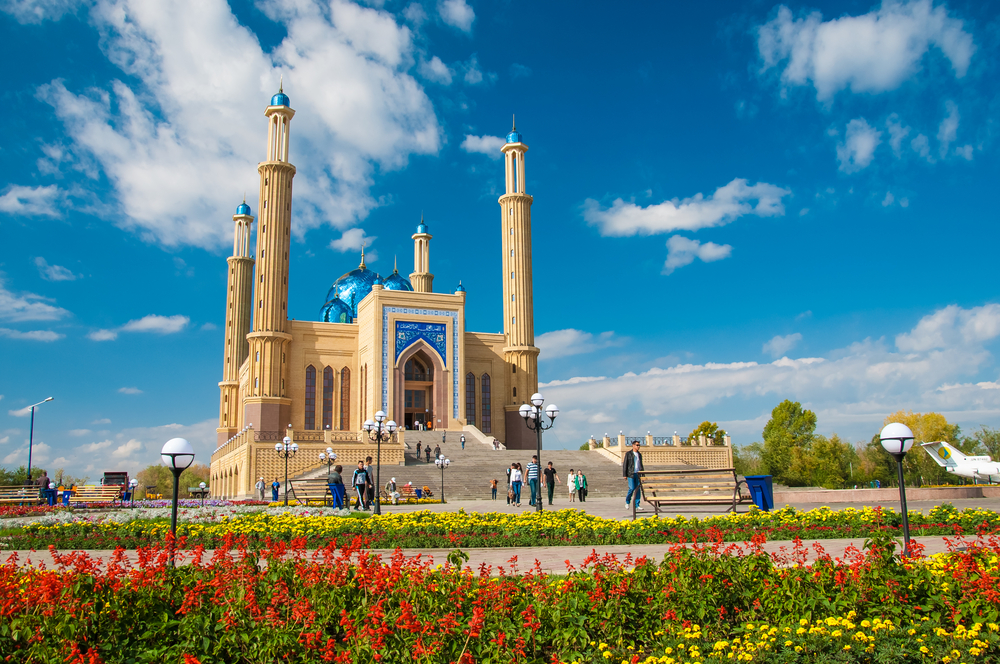
Oskemen is a vibrant city with a population of just over 300,000. Residents and visitors enjoy cinemas, museums, dramatic theater, and sports.
For those who enjoy the cultural aspect of travel, there are 21 cultural buildings in Oskemen, including many Orthodox Christian churches and mosques.
Sports enthusiasts will enjoy the Boris Alexandrov Sports Palace, home of the HC Torpedo ice hockey club. Here, the men’s team plays in the Supreme Hockey League and the women’s team plays in the Kazakh Women’s Ice Hockey League.
The city is home to the Oskemen Airport and has an intercity bus service available at two bus stations, making the Oskemen accessible to those flying in. There is a tram system with four lines and an extensive railway system with over 35 lines. In short, getting around Oskemen is easy!
9. Semey: 292,780
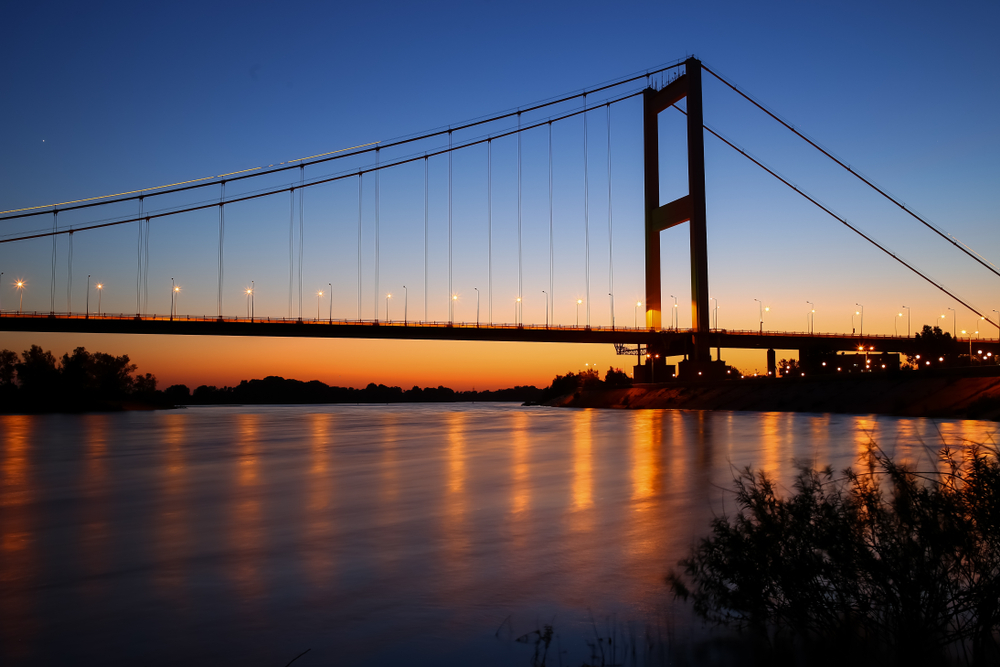
Semey is not a huge city, but with a population of just under 300,000, it is still one of the largest in Kazakhstan.
Famous for its modern medical facilities, this city provides the region and the country with highly trained, professional health specialists.
Semey is also a busy university town, and since it lies near the border of the Russian Federation, Semey has more of a Russian vibe than other cities in Kazakhstan.
The Semey Bridge is a famous local landmark. A suspension bridge spanning the Irtish River, it connects the two major parts of Semey and is an impressive 3,563 feet long.
Semey’s climate is warm in the summer and very cold in the winter. Snow is common although fairly light. You won’t need to pack snowshoes when visiting Semey in the winter, but bring a heavy coat!
10. Atyrau: 290,700

Atyrau is located at the mouth of the Ural River on the Caspian Sea and has a population of just under 300,000.
Atyrau’s citizens are mostly Kazakhs, Russians, Koreans, Tatars, Uzbeks, and Ukrainians. If looking to experience cultures, this is the place to go!
Atyrau is Kazakhstan’s main harbor city and is 66 feet below sea level. The city is said to be in both Asia and Europe since it is divided by a river with banks on both sides.
Visitors to Atyrau will find lots to do. A bridge built in 2001 is listed in the Guinness Book of World Records as the longest pedestrian suspension bridge in the world and is a must-see when in Atyrau.
This region is rich in oil, and pipelines run from Atyrau to Samara and to the Russian Black Sea port of Novorossiisk.
The third-largest oil refinery in Kazakhstan is located in Atyrau as well, and a deep-oil refining complex will be opening soon. Once finished, this complex will be capable of processing 2.4 million tons of raw materials every year!
Several oil fields in Atyrau are operated by Chevron, where employees and their families have their own village known as Dostyk.
The village includes housing, recreational facilities, and schools. There is also a large expatriate population in Atyrau working for Agip, ExxonMobil, Royal Dutch Shell, and ConocoPhillips.
11. Aktobe: 262,467
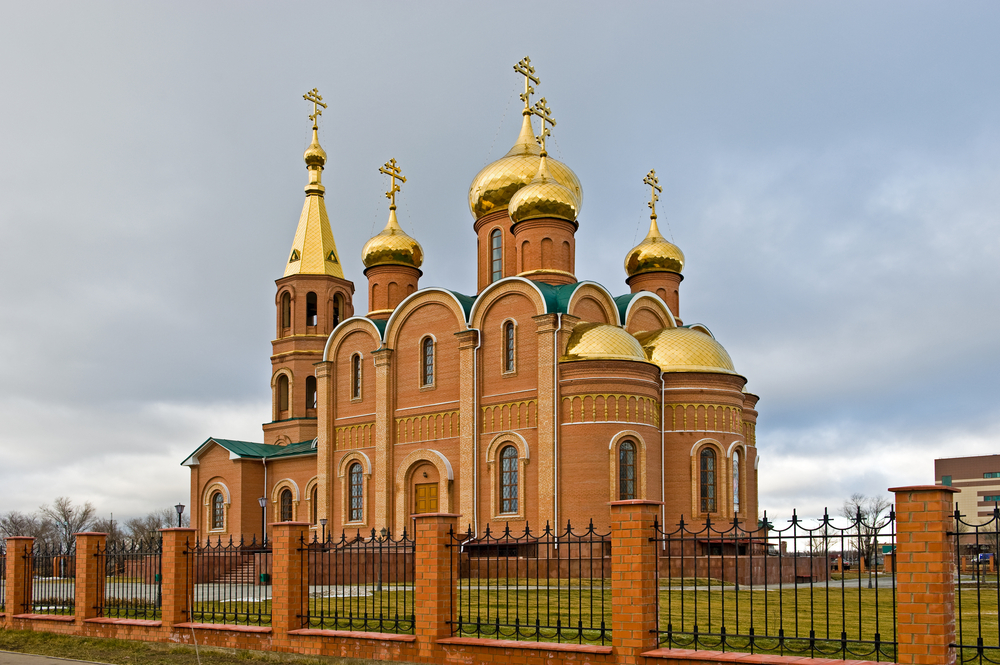
Aktobe is a cultural hub, with museums, theaters, cinemas, parks, fountains, and The Friendship House that boasts a concert hall and recording studio.
Every year on May 28th, the people celebrate City Day with a variety of cultural events. May 1st opens the summer season, and residents and visitors enjoy warmer weather, outdoor activities, music, and “Fountain Splashes”.
Aktobe has a large number of monuments, memorials, and sculptures, including the large granite Obelisk of Glory that honors the Aktobe residents who fell in battle for their homeland during the Civil War and 2nd World War.
Aktobe also has a domed planetarium that allows visitors to view solar eclipses, lunar eclipses, meteor showers, and marvel at the beautiful night sky.
12. Petropavl: 219,803
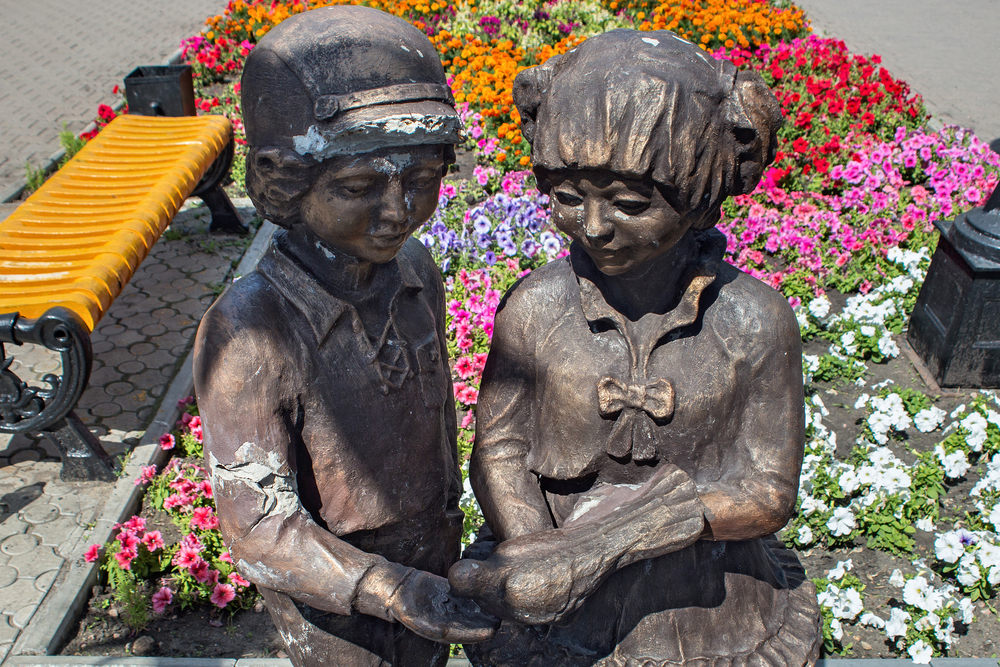
With a population of just over 200,000, Petropavl is a big city with the feel of a wildlife preserve. It is located in the West Siberian Plain on the banks of the Ishim River at the northernmost point of Kazakhstan.
The area is blessed with many lakes, including Lake Bolshoe Beloe, Lake Pestroye, Lake Kishtibish, Lake Maloe Beloe, and Bitter Lake. Small forests are also found throughout the city, where birches and pines reign supreme.
The city has many cultural activities, including live theater performances, museum exhibits, and puppetry arts. Petropavi’s regional puppet theater has been operating since 1991.
In addition to children’s performances, it offers various matinees and films for residents and visitors.
The North Kazakhstan Regional Museum of Local History, which has been open since 1924, also makes a great spot to spend the afternoon.
It houses a large map of the North Caucasus, which covers one entire wall. The museum also features exhibits that show the flora and fauna of the region in its natural habitat.
While visiting the museum, don’t miss the yurt and examples of national clothing – the craftsmanship is amazing!
13. Kyzylorda: 218,300
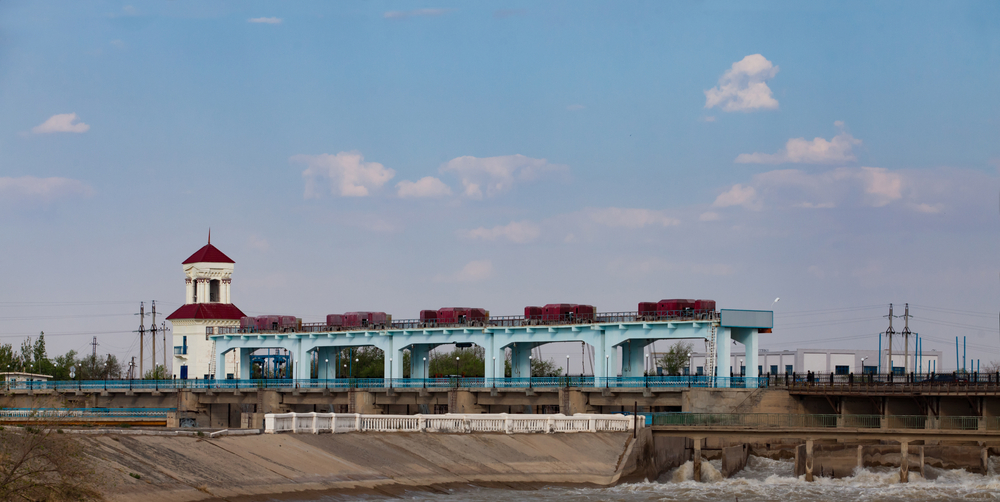
With a population of almost 250,000 people, Kyzylorda is one of the largest cities in Kazakhstan. Known for its rice production, the city has two rice mills in operation and is surrounded by agricultural communities.
Visitors to Kyzylorda will find interesting places to see, including archaeological excavations and ancient mausoleums. The vanished Aral Sea, the memorial complex of Korkyt Ata, and the Baikonur cosmodrome are favorite spots to visit.
Other points of interest include the Aitbai mosque built in 1878, the St. Kazan church built in 1896, the 1904 railway station, the Museum of History and Local Study, and the Regional Theater of Drama and Music.
14. Kostanay: 210,000
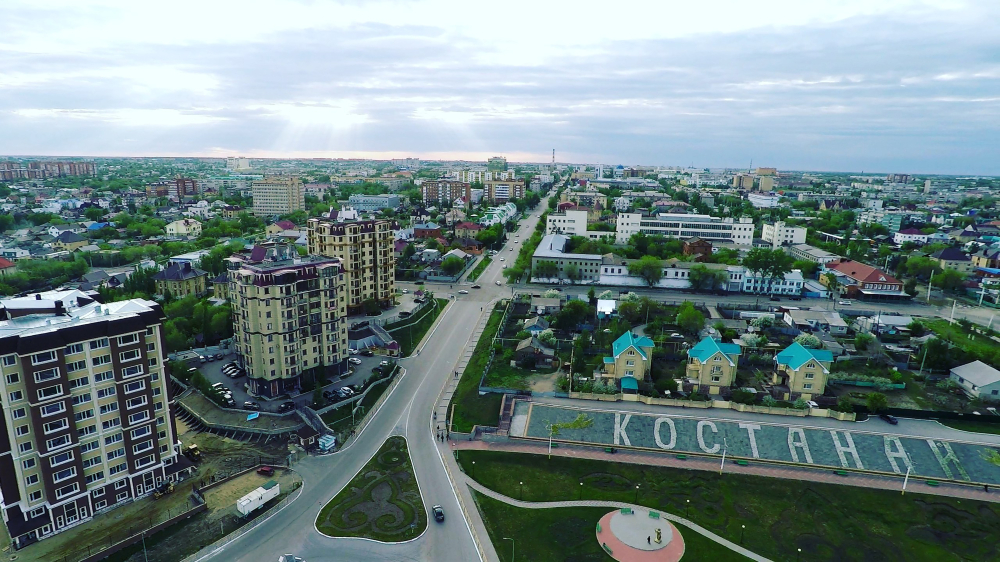
Kostanay is located in the West Siberian Plain on the Tobol River. With five colleges, 22 high schools, 381 libraries, 201 clubs, 8 museums, and 2 theaters, locals here don’t lack educational opportunities.
The city, with a population of over 200,000, also caters to sports enthusiasts with two sports arenas, 26 stadiums, 10 sports complexes, and 567 sports halls.
Kostanay is home to the FC Tobol football club, which participates in the Kazakhstan Super League. Basketball is also popular, and the city has an ice rink for winter sports.
Kostanay is a historical and cultural center. Points of interest include a Sunni Mosque, the Regional Administration Building, the Kostanay Regional Memorial Museum of Altynsarin, the Kazakh Drama Theater, and Central Square.
Visitors should make a point of visiting Kostanay’s many historical monuments, such as the Alexander Pushkin monument and a memorial dedicated to victims of the Second World War.
The city is proud of its 173 monuments, busts, obelisks, and plaques – and they should be, they are well worth the visit.
15. Temirtau: 170,600
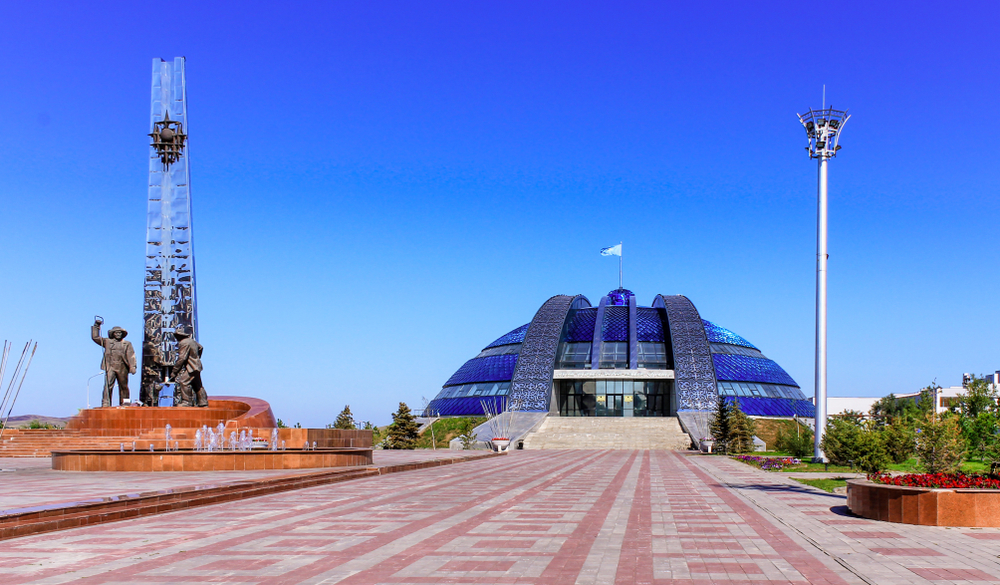
Temirtau is a relatively new city, with the first settlers arriving in June 1905. Temirtau now has a population that is closing in on 200,000 – that’s a lot of growth in 117 years!
Temirtau is located on the Nura River, an area that is rich in minerals. Temirtau means “Iron Mountain” in the Kazakh language – and the name fits perfectly.
As a producer of cast iron and other metals, the city relies on manufacturing to meet its economic needs.
Visitors to the city should be sure to visit the city’s Sports Complex, which includes a 50m swimming pool, a stadium that seats 15,000 people, and an indoor ice rink for hockey and skating.
Don’t miss the Winter Garden in Vostok Park. Created in 1993, it is a must-see. The city is also home to FC Bolat football club, which plays in the Kazakhstan First Division.
16. Turkestan: 157,399
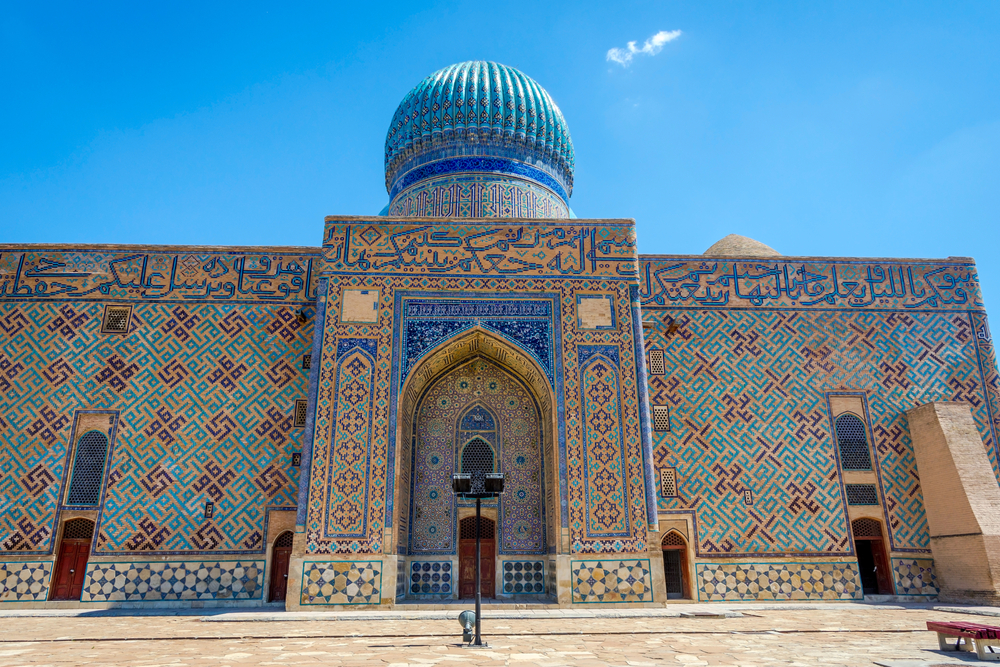
Turkestan’s population is hard to keep up with because it is increasing at such a rapid pace.
Turkistan, recently named one of the top ten tourist destinations in Kazakhstan, has lots of things to see and do, so it is no wonder that people flock to the area.
Near the Syr Darya River, the city is home to the Mausoleum of Khoja Ahmed Yasawi, which is designated as a UNESCO World Heritage site. This mausoleum is Turkestan’s most prominent historical and cultural building.
Khoja Akhmet Yasawi, the Saint or Blessed One, lived during the 11th century CE and is buried in the city’s famous mausoleum. Because of this, Turkestan has been named the Spiritual Capital of the Turkic World.
As a center of Islamic learning for the people of the Kazakh steppes, Turkestan is a destination for spiritual-minded people from Kazakhstan and around the globe.
Dating back to the 4th century, archeological records show that Turkestan is one of the oldest cities in the country. As such, the ruins of the medieval city of Otrar are a popular attraction.
Other points of interest include a medieval bathhouse, four other mausoleums, and Keruen-Saray – the largest tourism complex in Central Asia.
Keruen-Saray features shops, artisans, a flying theater, equestrian shows, a bazaar, hotels, restaurants, spas, a fitness center, a cinema, and a family entertainment center. Whew! What’s not to like?
17. Aktau: 147,443
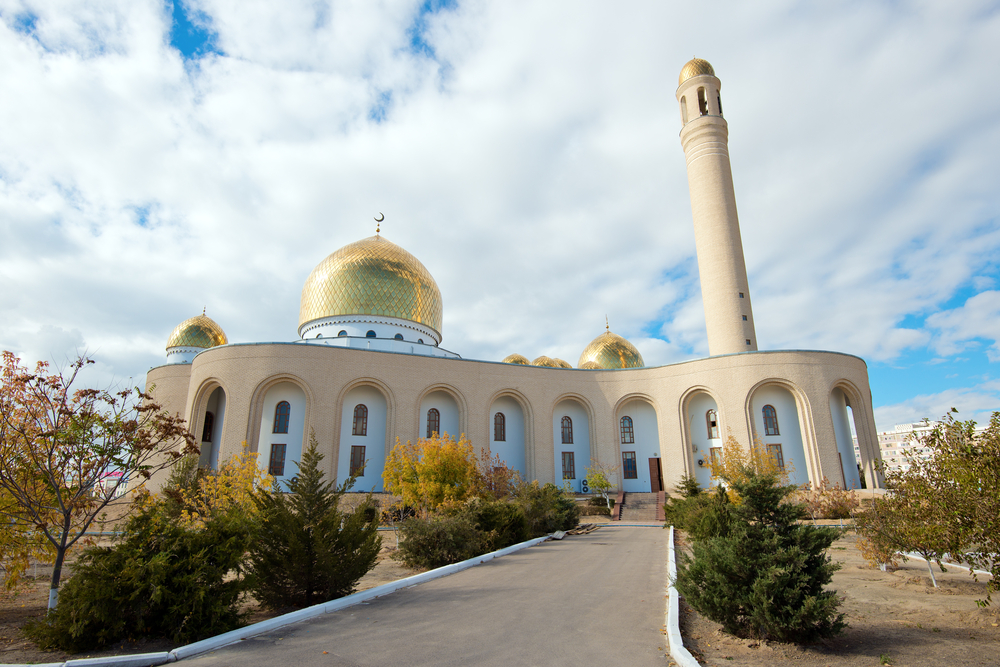
Located on the eastern shore of the Caspian Sea, Aktau is a popular tourist destination with sandy beaches and warm summer weather.
Visitors to the city will find every type of accommodation, from modern resorts along the coast to a variety of hotels. There are even western chains like the Holiday Inn!
There are many places to visit, including the 2nd World War Eternal Flame Memorial, the Mig Monument at Victory Mall, the Regional Studies and History Museum, the Drama Theater, and Yntynaj Square.
Taxis and buses are readily available and make it easy to get around the city.
Sports are also a big part of Aktau life. The city is home to the football club FC Caspiy, based out of Zhastar Stadium, which plays in the Kazakhstan Premier League.
18. Kokshetau: 141,396
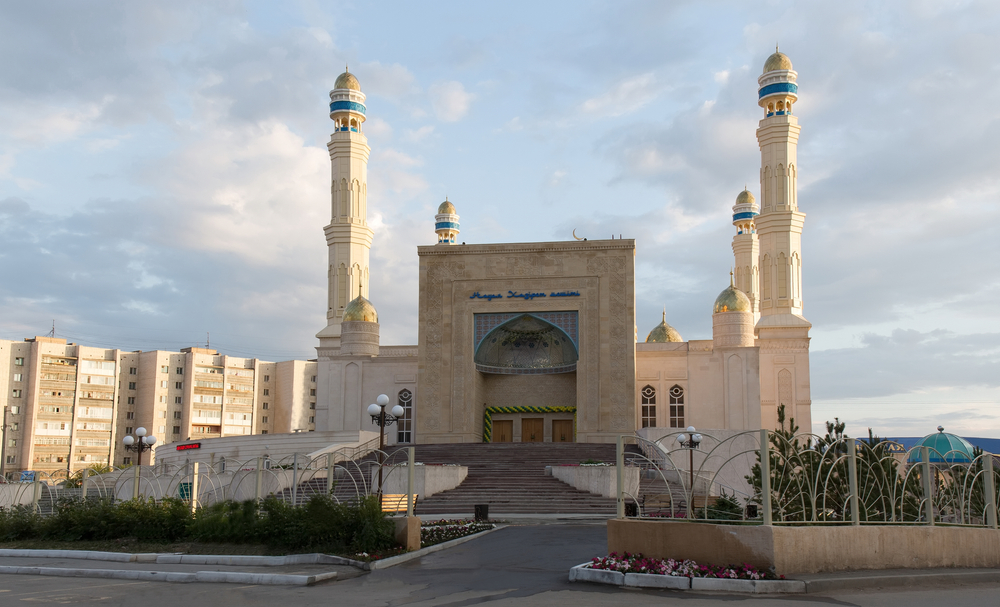
With a population of almost 150,000, Kokshetau is one of the larger cities in Kazakhstan. Situated on the southern shore of Lake Kopa, the city is named after Mount Kokshe.
The city has many nicknames, such as Kazakh Pearl, The Area of Blue Mountains, and The Area of Blue Lakes. With names like this, you just know that the area is stunning.
Kokshetau is home to a diverse group of people, which includes a mix of Kazakhs, Russians, Ukrainians, Tatars, Germans, Poles, and Ingush.
The city was founded in 1824 as a military fortress but is mostly known now for its nature and wildlife.
Several national parks are nearby, attracting nature lovers from around the world. Beautiful parks and gardens are also located in Kokshetau, delighting both travelers and residents.
Kokshetau is also the economic and educational center of the region, and the city was awarded the title of City of Culture in 2021.
Visitors will have a lot to see and do, including a visit to Ablai Khan Square, Nauan Hazrat Mosque, Zhakiya Kazhi Mosque, the Church of the Resurrection, the Church of the Holy Archangel Michael, St. George’s Church, and the Church of St. Anthony.
Don’t forget to visit the Akmola Regional Russian Drama Theater, the Akmola Regional Museum of History and Local Lore, the History Museum, the Museum of Literature and Art, and the Museum of the Hero of the Soviet Union – Malik Gabdullin.
Sports enthusiasts will enjoy an array of games from the FC Okzhetpes football club based in Okzhetpes Stadium to the Arlan Kokshetau ice hockey club based in the Burabay Sports Complex.
Taxis and buses are available 24 hours a day, so there is nothing holding you back from getting out and seeing the sights.
19. Taldykorgan: 137,654
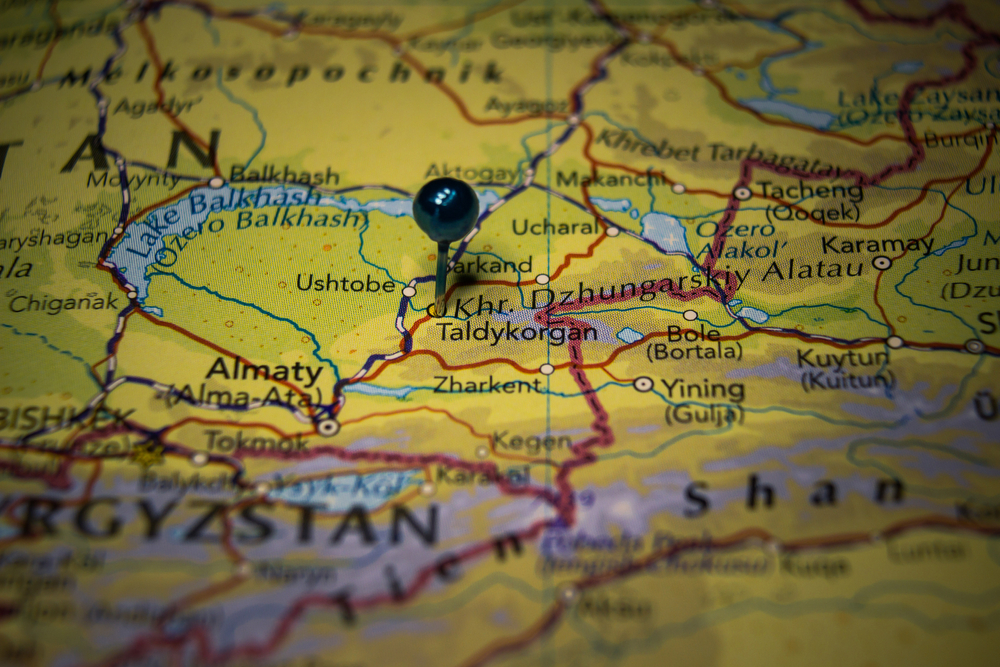
Taldykorgan is very educationally orientated with a range of universities, colleges, technical training centers, secondary schools, and kindergartens.
Visitors to the city will feel secure knowing that there are 27 public health facilities. Visitors will also find lots to do, whether it’s going to the cinema, the theater, an amusement park, a swimming pool, or a sports complex.
Taldykorgan has a temperate climate with more rainfall in the spring and autumn than in the summer and winter. Average summer temperatures range from 50 to 85 degrees, so keep this in mind as you pack.
20. Ekibastuz: 132,075
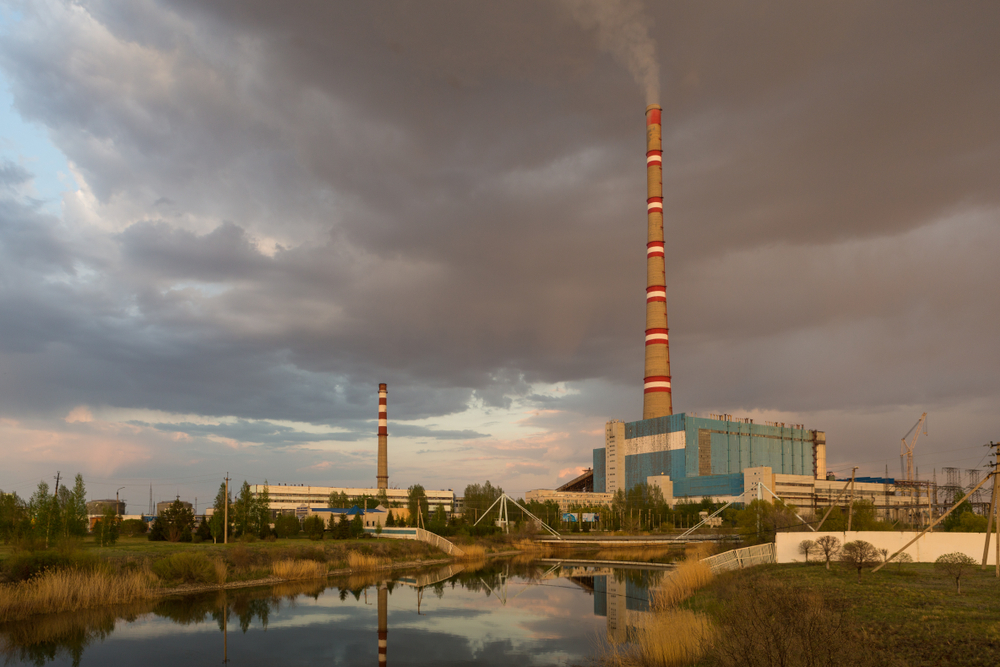
Ekibastuz derives its name from a lake of the same name, which means “two heads of salt” in Kazakh.
Founded in the 19th century for workers of a coal mine, the settlement was deserted by the end of the second world war. In 1948, a team of 50 people came to the area and started construction on what is now modern-day Ekibastuz.
By 1955, millions of tons of coal were being produced here, and the Vostochny Coal Mine is the biggest open-cast coalfield in the world! It contains more than 13 billion tons of coal in 62 square kilometers.
Ekibastuz is also home to the Shakhtyor Soccer Stadium, which was built on the site of a major Soviet labor camp in the Gulag system.
21. Rudny: 128,837
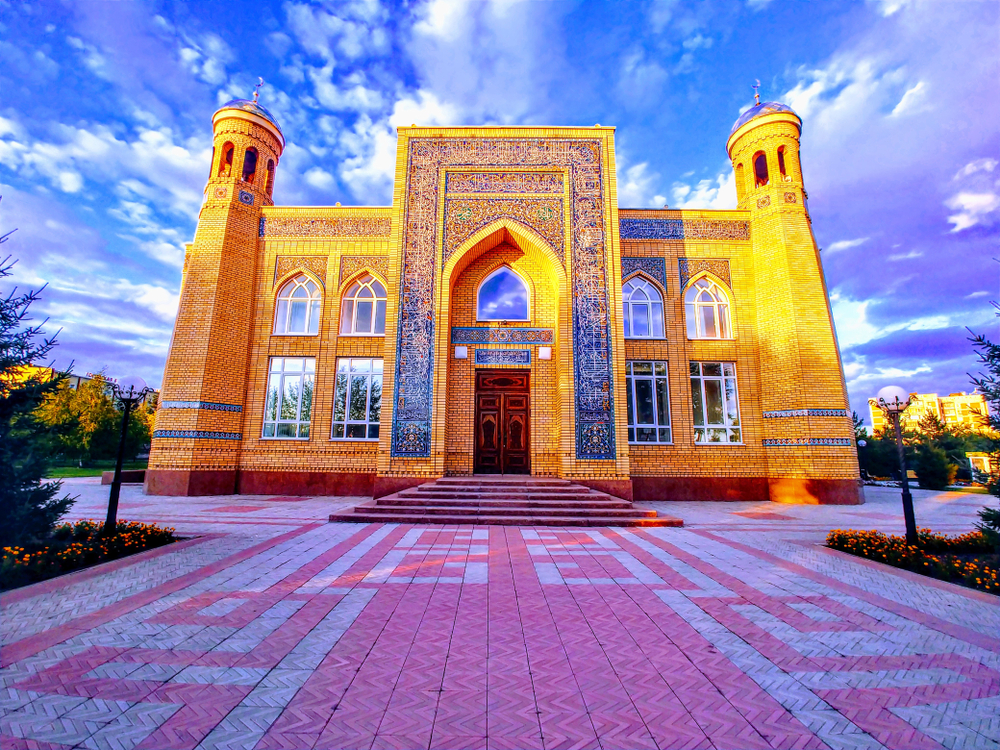
With a population of over 128,000 people, Rudny is listed as one of Kazakhstan’s larger cities. Ethnic groups that live in Rudny are mainly Russian, Kazakh, and German.
Rudny is famous for its minerals and iron ores. In 1949, a pilot flying over the area noticed strange behavior with his compass. The mineral deposits were so abundant that they had disrupted his devices! Soon, geologists and other officials began to arrive to explore the area. The rest is history.
Steelworkers who came to work here initially lived in tents, but prefabricated panel houses were quickly built. By 1955, the population was up to 4,000. Over time, the town grew into a major industrial and cultural center.
Visitors should make sure to visit the Rudny Mosque and the Cathedral of St. John the theologian when in Rudny.
22. Zhanaozen: 110,272

Located southeast of the city of Aktau, Zhanaozen is a large urban center located in eastern Kazakhstan.
With a population of just over 100,000, the city is situated in a dry part of the country with an average rainfall of fewer than 5 inches per year.
Zhanaozen is also very windy – pack a windbreaker and goggles when visiting the area!
There are a variety of places to see, including the Stadium of Amin Tuyakov, the Physical Culture-Improvement Complex of Rakhmet Utesinov, and Energetik – a children’s sports school.
23. Jezkazgan: 84,977
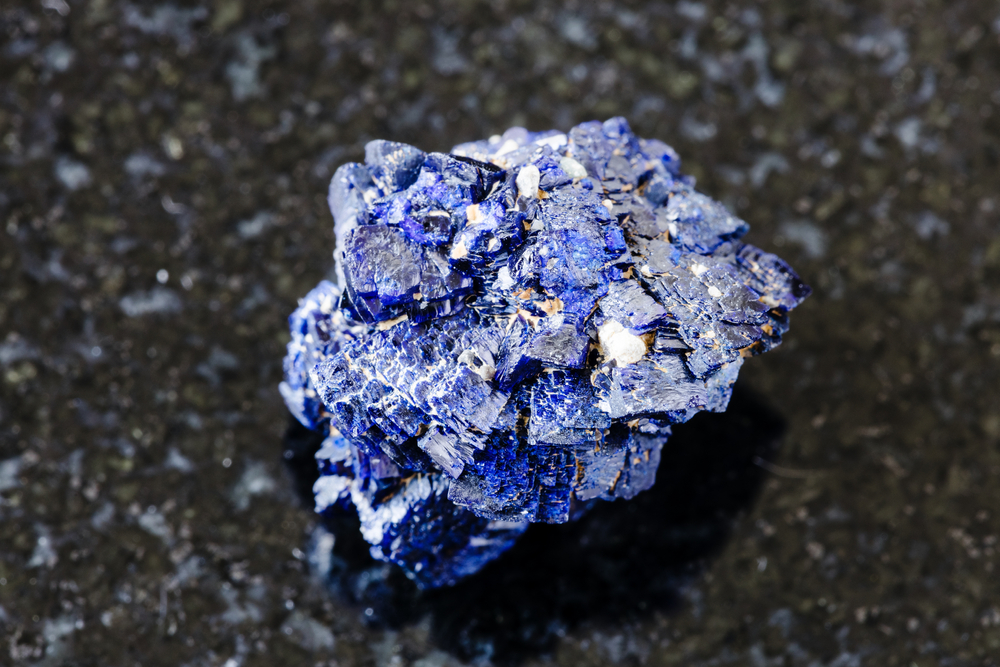
With a population coming in at just under 100,000, Jezkazgan is one of Kazakhstan’s smaller cities. Ethnic groups who live here include Kazakhs, Russians, Ukrainians, Germans, Chechens, and Koreans.
Jezkazgan is located right in the middle of Kazakhstan, in the very heart of the Kazakh upland. The city, like many others in the region, was created due to the rich minerals and natural resources found in this area.
Jezkazgan is especially rich in copper deposits, and it is home to a large mining and metallurgical complex that processes copper, manganese, and iron.
Visitors may be interested to know that the Soyuz 33 spacecraft landed near Jezkazgan in 1979.
Returning cosmonauts have a tradition of planting trees on Seyfullin Boulevard to mark their safe return from outer space. This tree-lined street is one of many interesting destinations to visit while in Jezkazgan and its surrounding areas.
24. Balkhash: 71,339
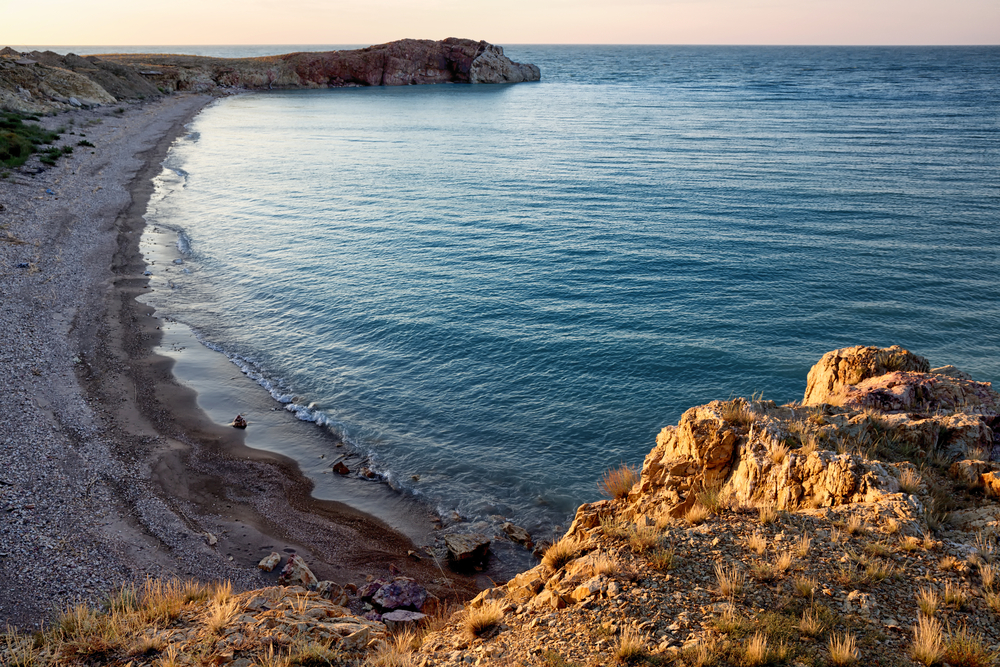
Located on the northern shore of Lake Balkhash and with a population of just under 75,000, this city has lots to offer.
As with many cities in the region, Balkhash is dependent on mining operations, and copper is the mineral that keeps this city alive.
During the Great Patriotic War (Russia’s name for the 2nd World War), men left Balkhash to fight while the women ran the smelts and factories. Japanese prisoners of war helped build the city once the war ended.
These prisoners were responsible for the construction of the Palace of Metallurgists and the Balkhash airport.
The climate in Balkhash is cool and semi-arid with warm summers and cold winters. Snow is common in winter, but fairly light. When visiting, pack for the season with heavy, warm clothing in winter and light, airy clothing in summer.
25. Kentau: 64,682
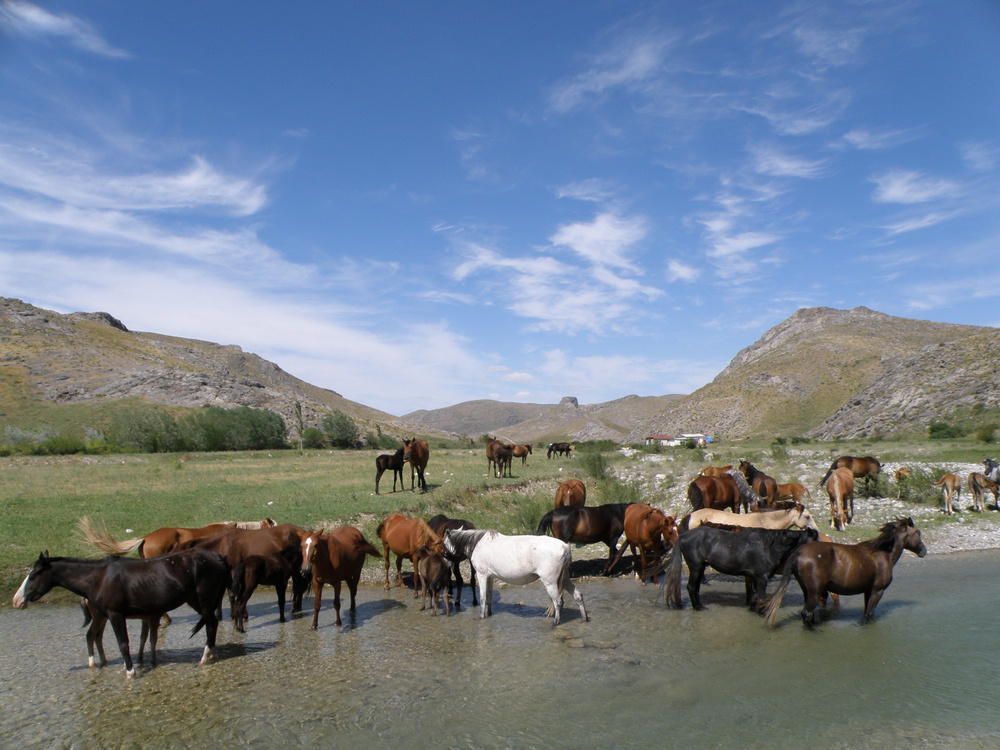
Kentau is located in Kazakhstan’s Karatau Mountains. Formed in 1955 by the Soviet Union, the city now has a population of approximately 70,000 residents.
The largest employers in the city are the Transformer Plant and the Excavator Plant. Both plants were famous during the height of the USSR.
Ethnic groups in Kentau include Kazakhs, Russians, Greeks, Germans, Koreans, Jews, Checkens, and Uzbeks.
Russian pop singer Linda was born in Kentau on April 29, 1977, and futsal (like soccer) player Dinmukhambet Suleimanov was born in Kentau on January 8, 1981.
26. Kaskelen: 64,416
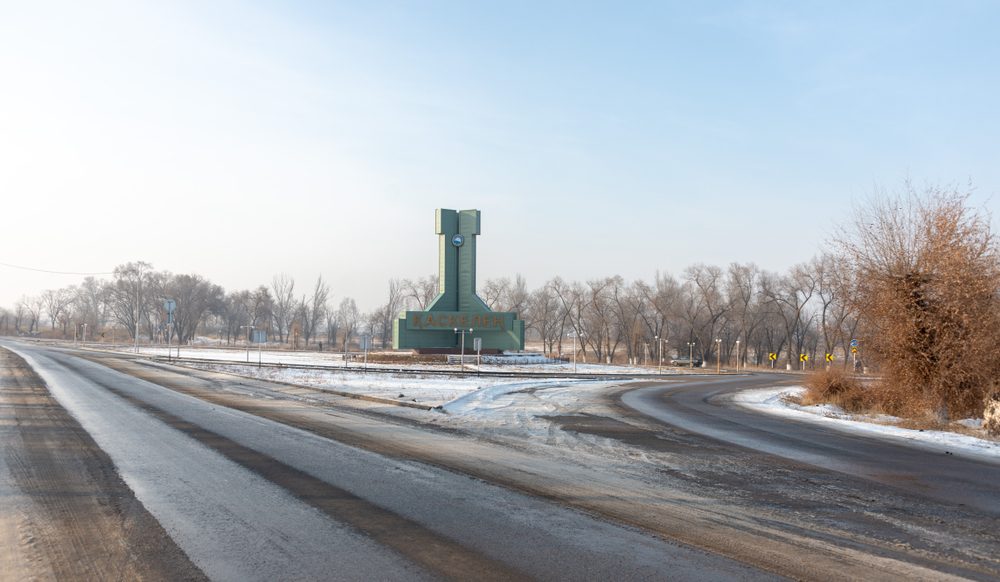
Kaskelen is located in the south-eastern part of Kazakhstan and is nestled near some gorgeous mountains.
Favorite attractions in Kaskelen include EcoFish, the Local History Museum of Karasai District, the Buggy Drome, the Zhambyly Zhabayeva Museum, and Aul Resort.
27. Satbayev (or Satpayev): 61,816
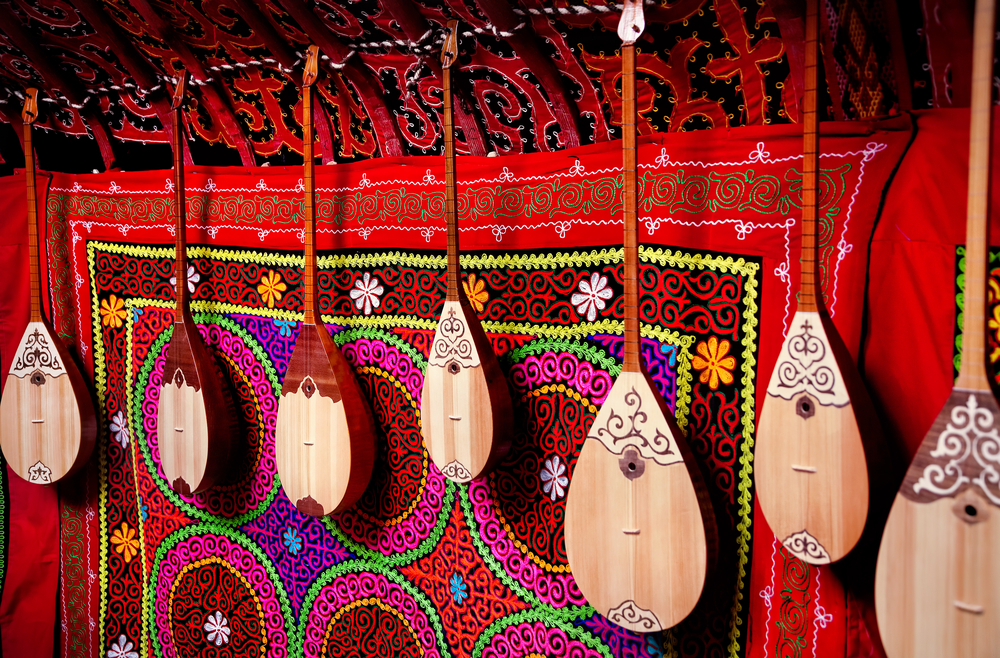
Satbayev has a population of approximately 70,000. The city is named for Kanysh Satbayev, a principal advocate and the first president of the Kazakhstan Academy of Sciences.
The center of the mining industry, Satbayev, sits right in the middle of the country. Transportation is provided by passenger trains and airplanes, meaning that it’s relatively easy to get to from other major Kazak cities.
28. Kulsary: 55,742
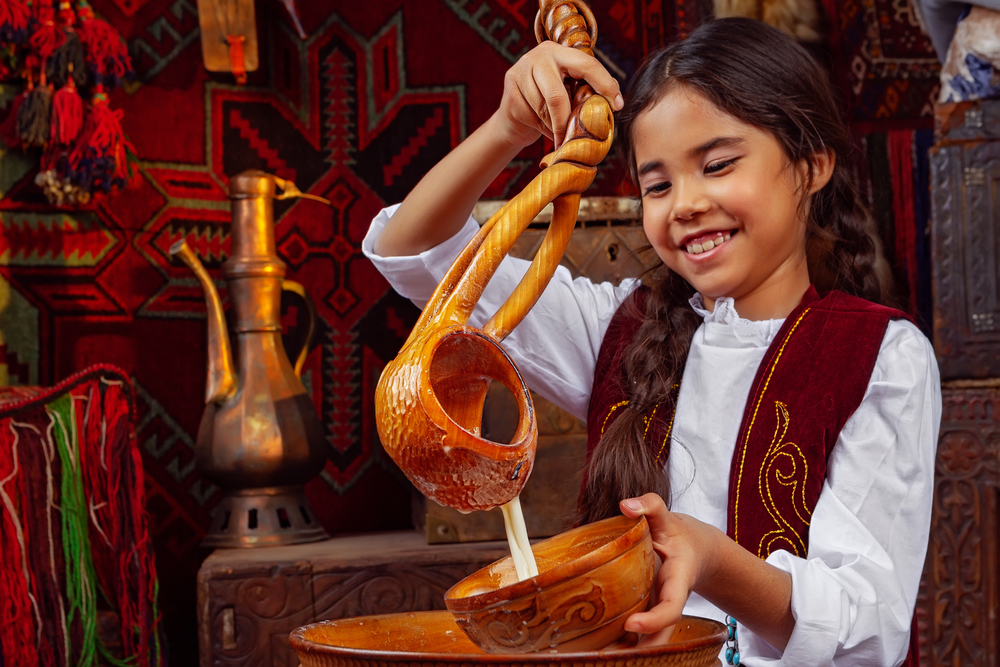
Kulsary, located in the western part of Kazakhstan, is home to petroleum mines and a scrap metal processing plant.
Kulsary’s climate is dry and fairly cold with rainfall averaging below seven inches per year. When visiting Kulsary, you probably won’t need a raincoat!
29. Stepnogorsk: 47,045
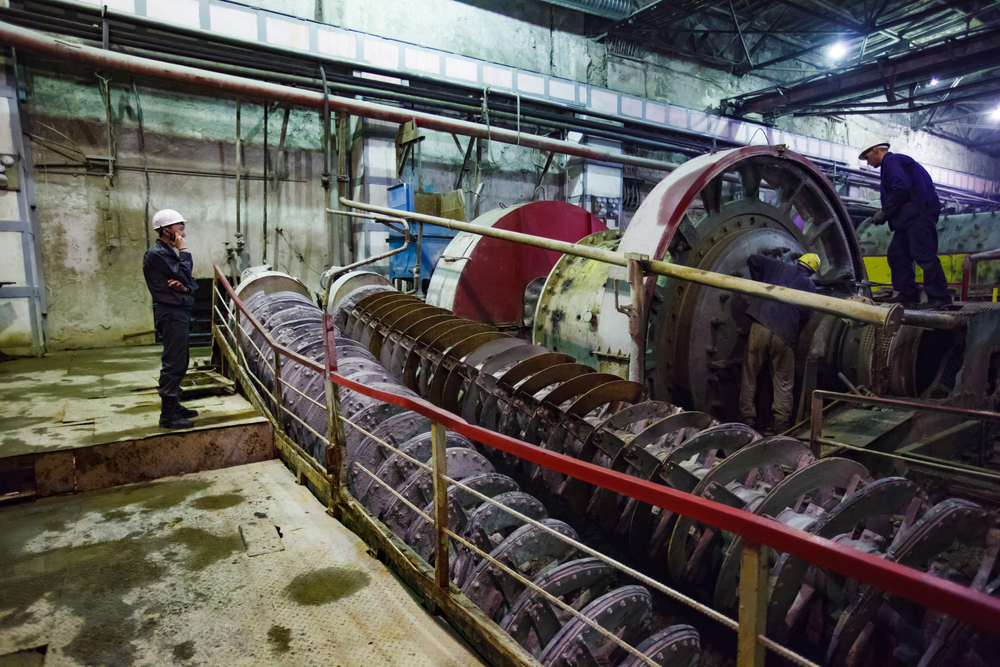
Stepnogorsk, with a population of around 50,000, is one of Kazakhstan’s largest towns. Located in the northern part of the country and established in 1959, it is known as a nuclear and biochemical site.
Visitors who like science may be interested to know that The Stepnogorsk Scientific and Technical Institute for Microbiology is located here.
The number one attraction in Stepnogorsk is the nearby Bestobe Canyon, which offers great photo opportunities.
30. Zhetisay: 36,494
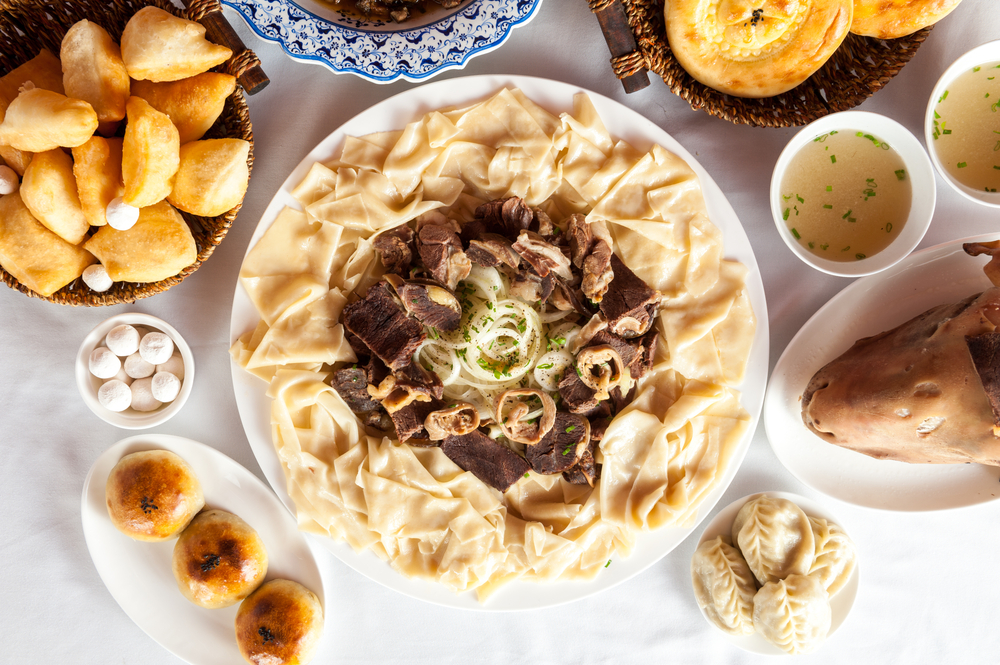
Zhetisay is a fairly small city in Kazakhstan. Located in the southern part of the country, the climate here is milder than in other areas.
Zhetisay, just like the southern parts of the United States, grows lots of cotton. Every fall, workers migrate to the city to help harvest the cotton crop.
They stay on the nearby farms and in the city itself. When traveling to the area, note that the city is more crowded at this time of year and accommodations may be harder to find.
Kazakhstan is a big country with many world-class cities
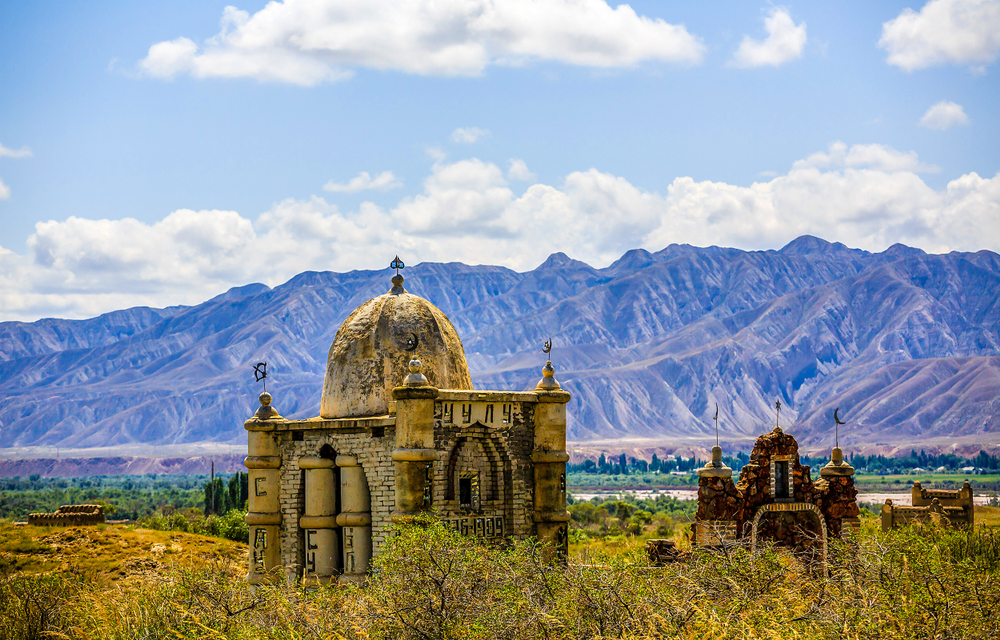
Kazakhstan has a population of over 19 million and is five times the size of Texas! Over half of Kazakhstan’s citizens live in the country’s cities, giving rise to large, modern cosmopolitan centers.
Kazakhstan’s cities are spread out over a large area with various customs, climates, and terrains. The most popular destination cities feature modern urban amenities with proven economic progress.
With reductions in poverty across the country, Kazakhstan’s cities are quickly becoming urban success stories.
Lots to see and do in the cities of Kazakhstan
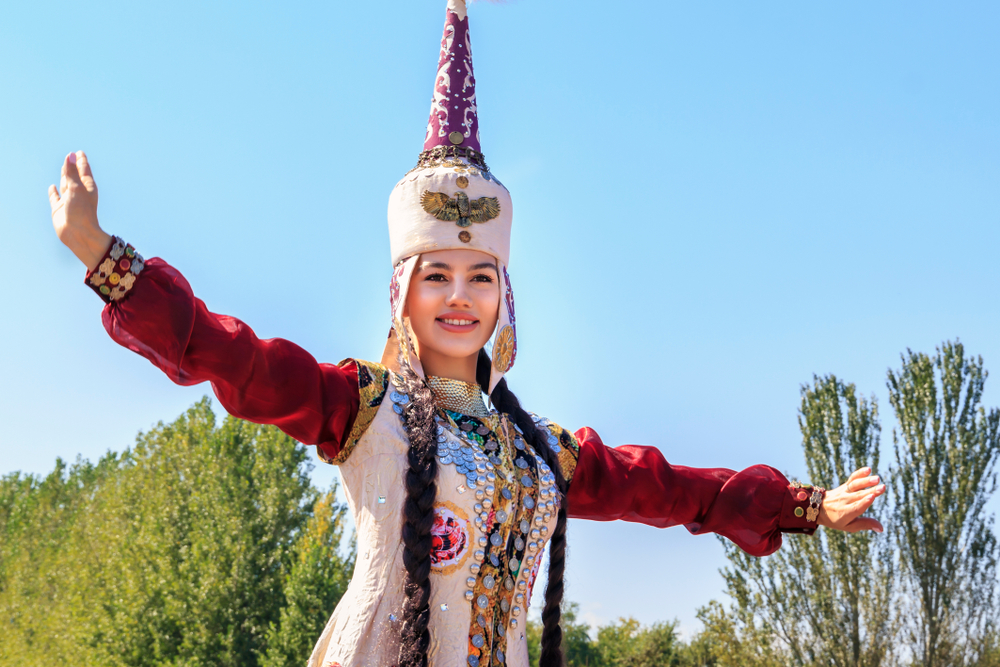
Visitors to urban centers find modern architecture, old-time charm, and plenty of things to see and do. From fancy hotels and resorts to hostels, yurts, and country inns, there is something for every taste and budget.
Getting around the country is easy with taxis, buses, trains, and planes available in all areas. There are also many car rental agencies throughout Kazakhstan if that is your preferred way of traveling.
Food is a big deal in Kazakhstan

From meat and potatoes to rice and pasta, menus are varied depending on regional cooking specialties. If you are a caviar fan, it is very cheap and of high quality, but this delicacy is not allowed to be taken out of the country!
When traveling to various cities within Kazakhstan, visitors find good food, friendly people, and lots to explore.

